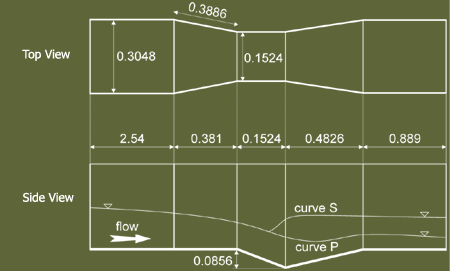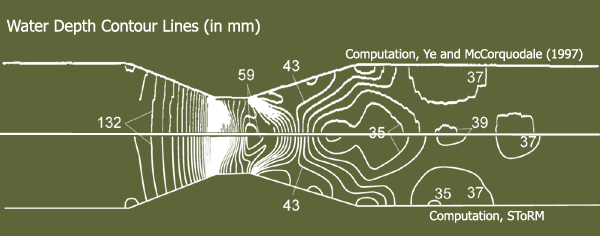System for Transport and River Modeling
SToRM (System for Transport and River Modeling) is a two-dimensional surface- water flow code based on the shallow water equations. It uses a technique that blends some of the features of finite volumes and finite elements, it implements truly multidimensional streamline upwinding methods, and provides steady and unsteady versions in the same package. A dynamic wetting and drying algorithm allows the computation of flooding, including flash flooding and catastrophic dam break flows, in irregular geometries. SToRM can deal with subcritical and supercritical flows, regime transitions, and hydraulic jumps.
SToRM is implemented in Fortran 90 by using dynamic memory allocation and runs on personal computers with Microsoft Windows. It is packaged in a graphical user interface (MD_SWMS) that contains, among many other data manipulation and visualization tools, an automatic mesh generator.
- Advanced turbulence models;
- Sediment transport algorithms for cohesive and noncohesive sediment mixtures ;
- Transport of suspended and dissolved substances;
- Automatic mesh refinement;
- Built-in solution quality control;
- Advanced non-reflective boundary conditions.
Example - Parshall Flume

Parshall Flume example: Flume top and side views.

Parshall Flume example: automatically generated mesh, including mesh refinement at flume constriction.

Parshall Flume example: Water Depth Contour Lines, comparison between previously published computation and SToRM computation.
